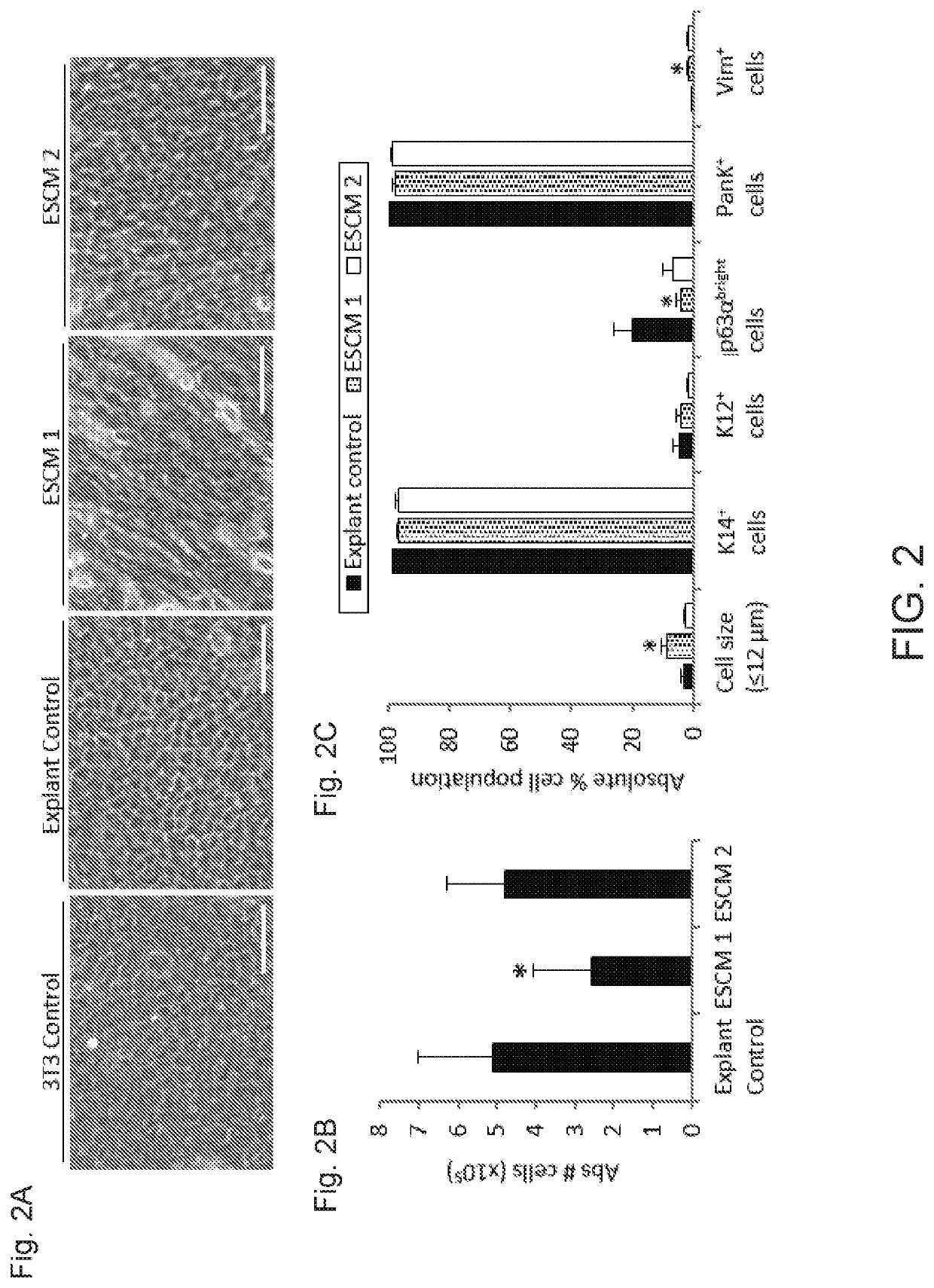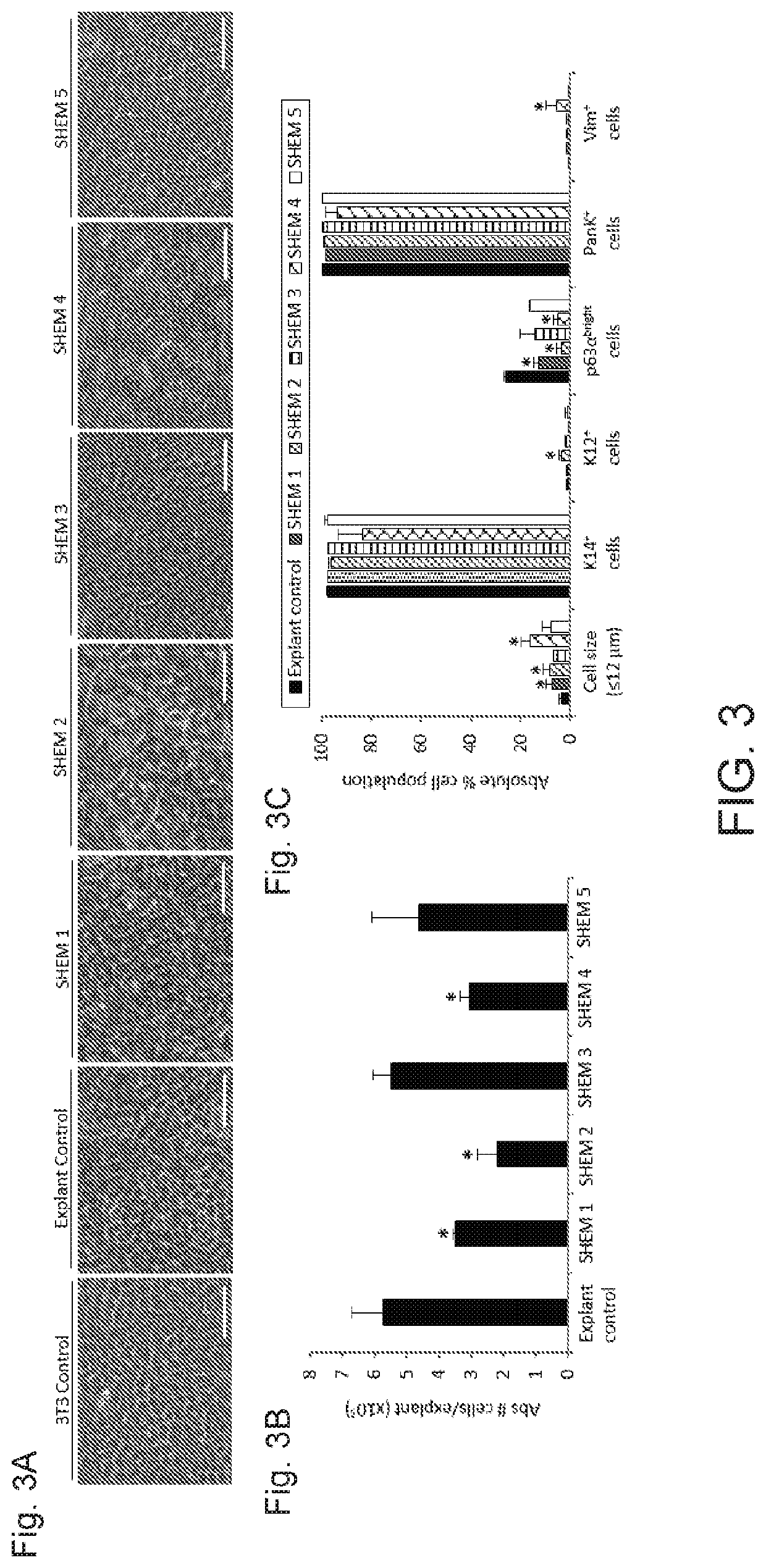Xenobiotic-free culture system to expand human limbal stem cells
a cell culture system and culture medium technology, applied in cell culture active agents, non-embryonic pluripotent stem cells, biochemistry apparatus and processes, etc., can solve the problems of corneal transplantation being ineffective to treat severe to total lscd, risk of transmitting animal diseases to human recipients after transplantation, and reducing the risk of cross-contamination and/or reagent toxicity. , the effect of efficient propagation of undifferentiated lscs
- Summary
- Abstract
- Description
- Claims
- Application Information
AI Technical Summary
Benefits of technology
Problems solved by technology
Method used
Image
Examples
example 1
ve Study of Xenobiotic-Free Media for the Cultivation of Human Limbal Epithelial Stem / Progenitor Cells
[0039]The culture of human limbal epithelial stem / progenitor cells (LSCs) in the presence of animal components poses the risk of cross-species contamination in clinical applications. We quantitatively compared different xenobiotic-free culture media for the cultivation of human LSCs. LSCs were cultured from 2×2 mm limbal tissue explants on denuded human amniotic membrane (AM) with different xenobiotic-free culture media: CnT-Prime supplemented with 0%, 1%, 5%, and 10% human serum (HS), embryonic stem cell medium (ESCM) alone or in combination with the standard supplemented hormonal epithelium medium (SHEM, control) at a 1:1 dilution ratio, and modified SHEM (mSHEM) in which cholera toxin and dimethyl sulfoxide (DMSO) were replaced by isoproterenol and the epidermal growth factor (EGF) concentration was reduced. Several parameters were quantified to assess the LSC phenotype: cell mor...
example 2
System for the Cultured Limbal Stem Cells
[0078]This example describes a transport vessel designed to transport the cultured limbal stem cells (cLSCs, LSCs on the amniotic membrane carrier) from the cGMP manufacturing facility to the operating room where they will be transplanted.
[0079]The transport vessel for the cLSCs is a screw-cap and tight-sealed titanium container that has a ring attached to the lid to stabilize the cLSCs (see, e.g. FIGS. 6-8). This was developed at the Machine Shop of SEI (UCLA).
[0080]The vessel is made from titanium 6AL4V or 6AL4V ELI alloys that contains 6% Aluminum and 4% Vanadiumor (Grade 23). These are the most common types of titanium used in medicine. This titanium grade has less oxygen so it is less corrosive than other titanium grades and non-leachable.
[0081]The vessel is designed to maintain the cLSC graft stable down at the bottom and avoid substantial movements during transportation (see, e.g. FIG. 7). The part of the container that makes this poss...
PUM
| Property | Measurement | Unit |
|---|---|---|
| v/v | aaaaa | aaaaa |
| temperature | aaaaa | aaaaa |
| diameter | aaaaa | aaaaa |
Abstract
Description
Claims
Application Information
 Login to View More
Login to View More - R&D
- Intellectual Property
- Life Sciences
- Materials
- Tech Scout
- Unparalleled Data Quality
- Higher Quality Content
- 60% Fewer Hallucinations
Browse by: Latest US Patents, China's latest patents, Technical Efficacy Thesaurus, Application Domain, Technology Topic, Popular Technical Reports.
© 2025 PatSnap. All rights reserved.Legal|Privacy policy|Modern Slavery Act Transparency Statement|Sitemap|About US| Contact US: help@patsnap.com



